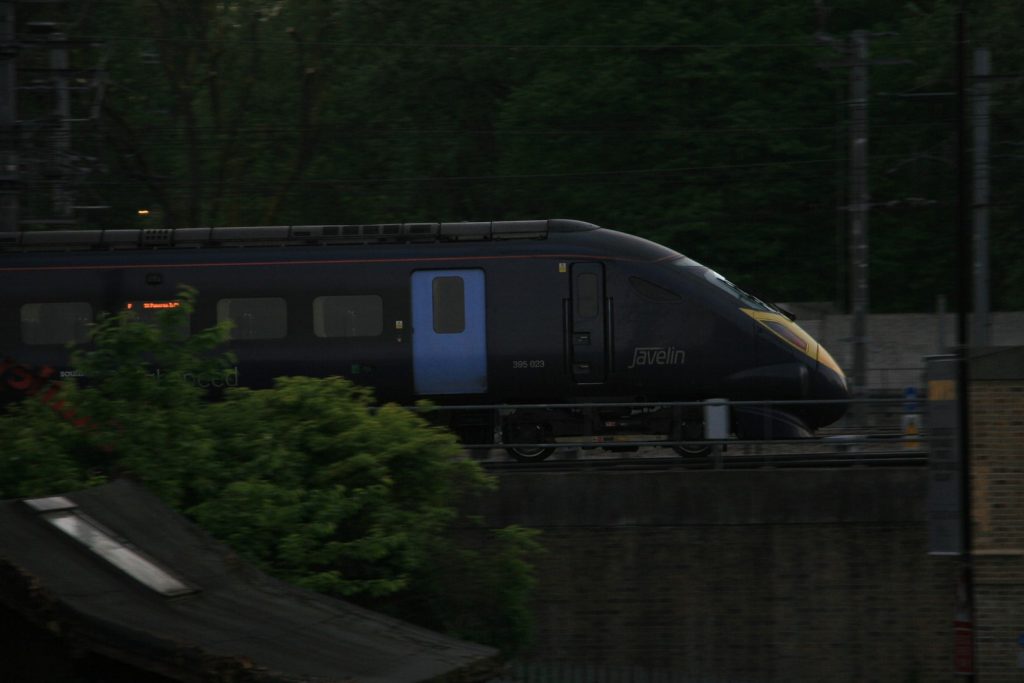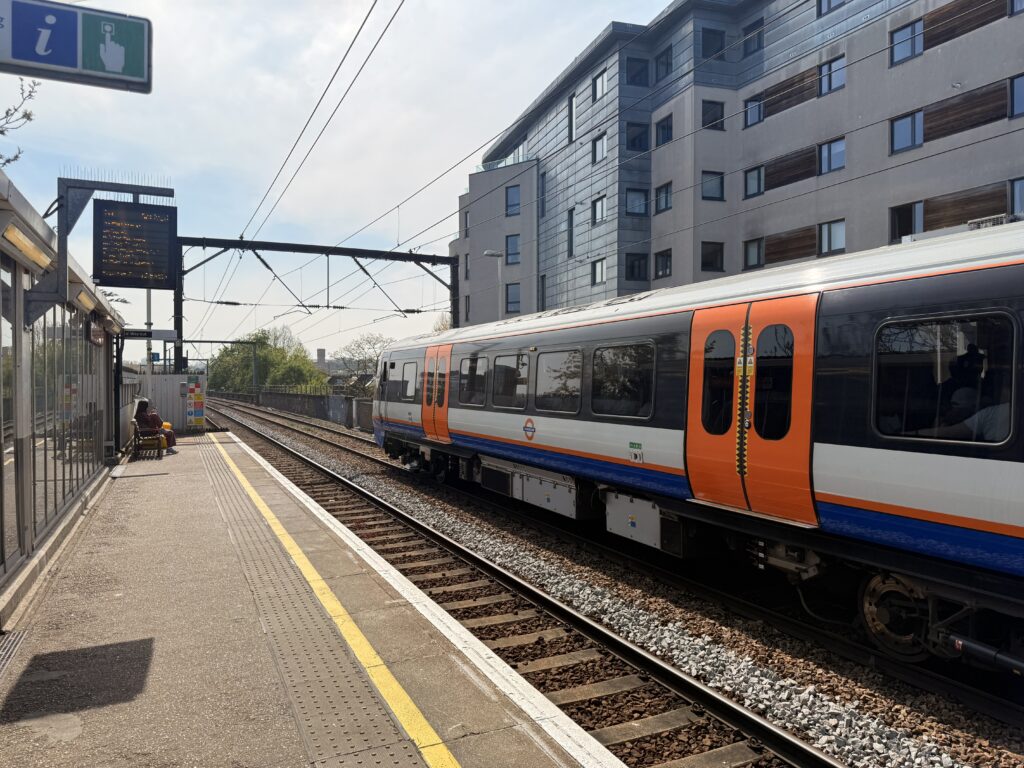"I found the way to success by taking a constructive, proactive and cooperative approach and not giving up when you are told ‘no’. Also, if you have your own ideas, put them forward; you never know what has been overlooked or simply never thought about."
My name is Dylan Fox and I am based in Leyland. I have been very kindly invited by Enroute to share my own experience of campaigning to resolve a significant accessibility issue at Leyland station, the development of a solution to overcome this and how taking an interest in this issue has positively affected my life.
With Leyland having four platforms and being located on the West Coast Mainline directly south of Preston, alterations are inevitable and little can be done to prevent them completely. For those unfamiliar with the layout of Leyland station, all northbound trains can only arrive at platforms 1 and 3 and all southbound trains can only arrive at platforms 2 and 4. Platforms 2 and 3 are formed as one large island platform in the middle of the station with platforms 1 and 4 being traditional standalone platforms at either side of the station. The layout of the station and lines mean that passengers must cross over the bridge when any alteration occurs and when when one does occur, passengers only typically get around 30 to 45 seconds notice before the train arrives. This results in passengers running over the bridge in an attempt to try and catch their train and anyone requiring the lifts won’t have any chance of catching it!
The current workaround solution is for the signaller to phone the ticket office at Leyland station in advance so the station staff can put out an announcement manually and inform passengers when they purchase tickets. Despite station staff doing all they can to inform everyone, they are unable to override the customer information system, meaning that the departure screens and automated announcements will continue to refer to the original platform until the train arrives. This has resulted in passengers becoming confused as to which platform their train will arrive on; I have witnessed on several occasions passengers crossing back over to the original platform when the automated announcement is triggered. There has also been several occasions when the signaller has failed to give advance notice or an alteration occurring when the ticket office is closed. This is surely not acceptable for passengers and you can find several tweets where passengers are voicing their frustration over this issue. As someone with Autism who struggles to travel independently, I understand how stressful this situation could be for anyone, never mind people like myself who may struggle to process change at short-notice! I felt as though something needed to be done.
I started by contacting Northern directly. After having going back and forth between different departments, I was finally able to get a meaningful response which said that it wasn’t possible to currently predict alterations at Leyland as the S-Class data (which says what route has been set for the train) provided by Network Rail was not available in this area. I then contacted Network Rail. Once again this was not a simple process and whilst they initially tried to refer me back to Northern, they eventually backed down but said it would not be possible to provide S-Class data due to limitations with the signalling system in the Preston area; the only option would be to re-signal the whole area, something which they had no intention of doing. This shocked me; areas like Cambridge are being re-signalled despite their current system providing S-Class data. Surely accessibility should be one of (if not, the) biggest consideration when it comes to these kinds of infrastructure projects. I tried starting a campaign called #ResignalPreston, sharing it on the Friends of Leyland Station Facebook page to try and raise awareness of the cause of the alteration issue and to put pressure on Network Rail to carry out the necessary works. Whilst I got local support, there is nowhere near the same level of support than other rail campaigns such as Piccadilly Platforms due to it being a very localised issue. I did try contacting my local MP but they did not seem very interested at all. During the time I was campaigning, I did become aware of plans to re-signal the whole Preston area but this is only due to occur in the mid-to-late-2030s as part of Network Rail’s Trilink project. I do understand the expense and complications of replacing a large, approximately 50 year old signalling system and I concluded that the chances of Network Rail bringing these plans forwards were basically zero. On the other hand, waiting over ten years for a solution to an issue which is significant now is completely unacceptable.
I still did not give up and I tried to find an alternative solution; it was at this point I saw a potential breakthrough. I was looking at online live signalling diagrams for Leyland that utilises the available C-Class data (which shows the current location of trains) and noticed there are signalling berths in-between the crossover junctions either side of the station and the station itself. Once a train has entered one of these berths, it cannot possibly change to a different platform from this point onward, even though the information system will only identify it once the train enters the platform berth. If a live, third party diagram can identify this, then why can’t the station’s information system? I could have contacted Northern straight away at this point but with my final year of my computer networking degree approaching, this became the perfect opportunity to prove my findings by developing a system that could automatically identify platform alterations at Leyland. The system I developed runs on a Raspberry Pi computer automatically monitors two data feeds, one providing the real-time location of trains and the other providing the timetable with the scheduled arrival platform. It will automatically send a notification to your phone as soon as the train enters one of the, what I refer to as ‘determining berths’, where once a train enters, it cannot possibly change lines and the scheduled platform does not match the platform where the train is going to arrive at. I also noticed as part of my research that there were two lines that had ‘determining berths’ further in advance, the furthest being four berths away from Leyland station.


Signalling diagrams showing which berths can determine a platform alteration as it is not possible to change lines after these berths. Original diagrams from Traksy.
Although my system had some reliability issues involving the connection with one of the data feeds, it proved my theory that it was possible to predict platform alterations in advance, on average around 3 minutes before the train arrives. I will be contacting Northern with my findings in due course in the hope that their customer information system can be adapted to identify alterations further in advance.
This whole ordeal has proven to me that it is possible to influence change for any organisation, even some of the biggest such as Northern. I could have just moaned to Northern’s social media team indefinitely but that would not have got anywhere. I found the way to success by taking a constructive, proactive and cooperative approach and not giving up when you are told ‘no’. Also, if you have your own ideas, put them forward; you never know what has been overlooked or simply never thought about. Of course financial constraints will always be the biggest hurdle in this society and I am still very much of the opinion that re-signalling is the best long term solution. Don’t expect the Castlefield Corridor to be widened because a computer model you made said it will reach capacity in the next five years but remember that pressure applied in the right way can lead to influence the very largest of organisations.
Being part of a university project as well, it has lead me to be on track for achieving a 2.1 Bachelors degree and I am hoping that it will unlock potential job opportunities in the future. This shows that being passionate about issues such as this can be personally rewarding in ways that you do not expect. I had no idea what I wanted to do for a project at the end of my second year and if I had never took an interest in this issue, I would’ve probably had no choice but to do a project I didn’t like and would have most likely been detrimental to my grades. I didn’t expect this at all when first taking on this issue and just goes to show that it is possible to achieve anything, even in the most unlikely ways.




Interesting issue which should be easily fixed – worldline (who control the CIS) will be able to map the signal berths and get the platforms to change earlier – they are simply mapped to the current station berths rather than the ones prior to the station.
This is something the northern team should be able to raise with worldline and fix with relative ease – we’ve certainly done it a few times in our TOC!
That’s interesting to hear.
Just to clarify. Wordline lost their contract with Northern in 2017. The CIS is now with a company called KeTech.